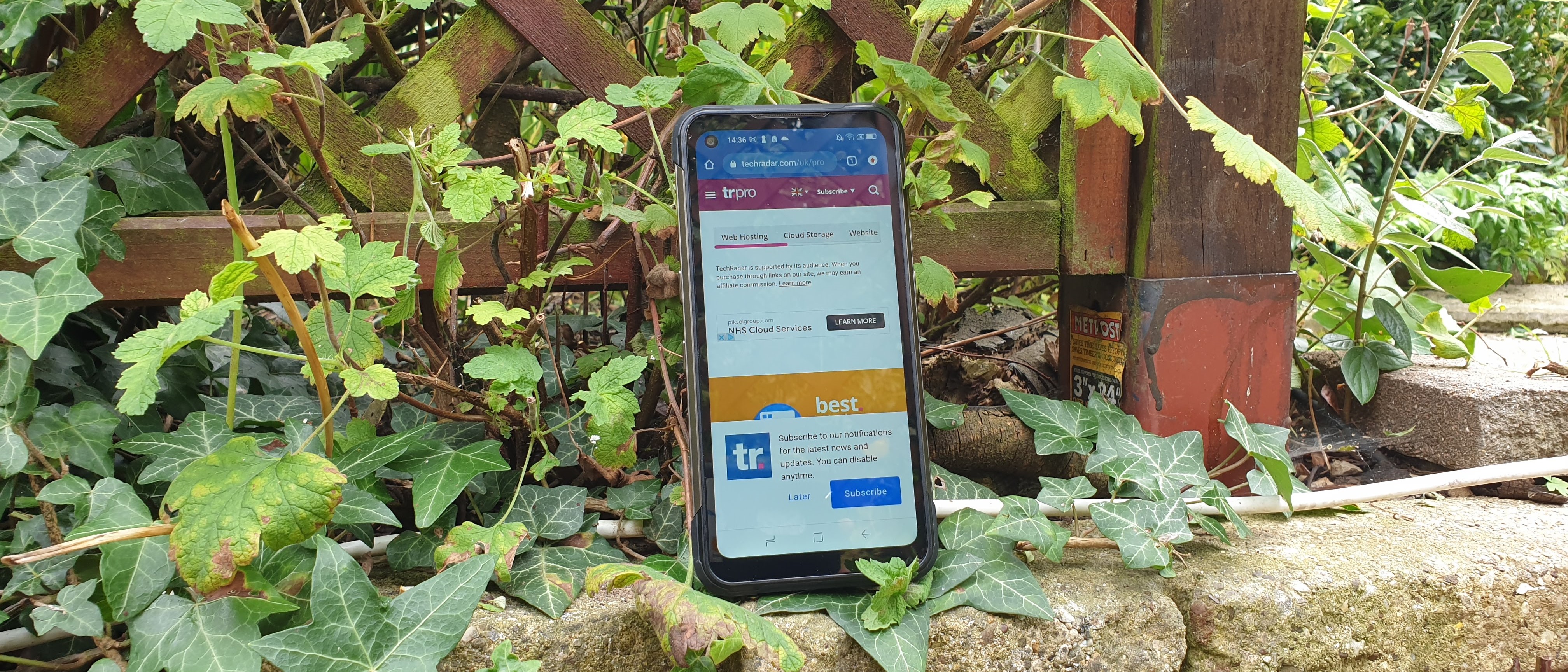TechRadar Verdict
The Doogee S97 Pro comes with an interesting feature - a laser rangefinder - but not one that will be a deal maker or breaker. Without it, the S97 Pro is a midrange, run-of-the-mill rugged handset that hits the right notes as long as you don’t care about the HD+ display.
Pros
- +
Laser rangefinder
- +
Two customizable buttons
- +
Decent price
- +
Huge battery
- +
Great performance
Cons
- -
Low screen resolution
- -
A bit heavy and wieldy
Why you can trust TechRadar
Two-minute review
With the S96 Pro released earlier this year, Doogee’s S97 Pro was always going to be a stop gap until the release of the first 5G model from Doogee. Its USP is its laser rangefinder, which as a standalone gadget, costs around $30. Useful but not as a game changer/head turner as the thermal imaging sensor (found in rival devices but on no Doogee phones yet). Take that away and you’re left with an average rugged smartphone that will face a lot of competition (Doogee S88 Plus & S96 Pro, Umidigi Bison Pro); all of them have a much higher screen resolution as well. Still, the S97 Pro has a few cards up its virtual sleeve; its G95 SoC is no slouch and a massive battery will help keep it alive for far longer than most smartphones in its category.
Pricing and availability
The phone is available from Doogee’s official store on Banggood in three colours (red, black and orange) for just under $250 (about £180, AU$339). Just bear in mind that while shipping is included, local taxes and admin fees - usually levied by the courier - are not.
- Want to buy tech from online Chinese retailers? Read this first.

Design
The S97 Pro resembles dozens of other rugged smartphones out there; a mixture of black plastic and gray metal with a deliberately utilitarian design. Something that feels solid but one that you wouldn’t want to use as a fashion statement, unlike say, the Nokia XR20.
It also ranks as one of the heaviest outdoor handsets we have reviewed recently at 350g, packed in a body that measures 167 x 81 x 15.5mm. In other words, it’s a chunky piece of technology that is likely to survive a lot of physical abuse before giving the ghost. That’s thanks to its IP68/MIL-STD-810G rating.
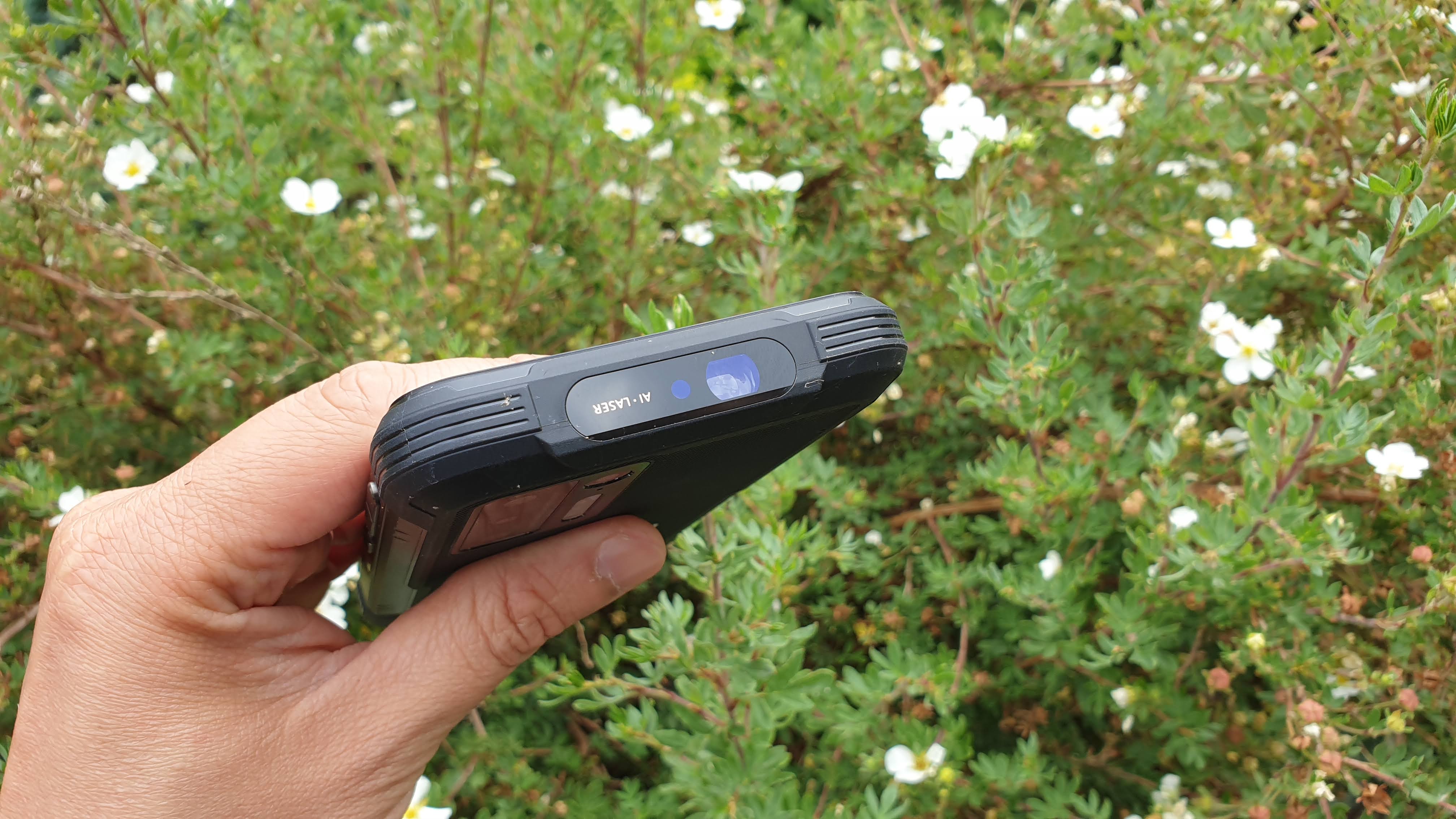
One of the reasons why it is so big can be found on the top edge where a laser rangefinder is located. This feature is useful for DIY people and handymen and works up to distances of 40m.
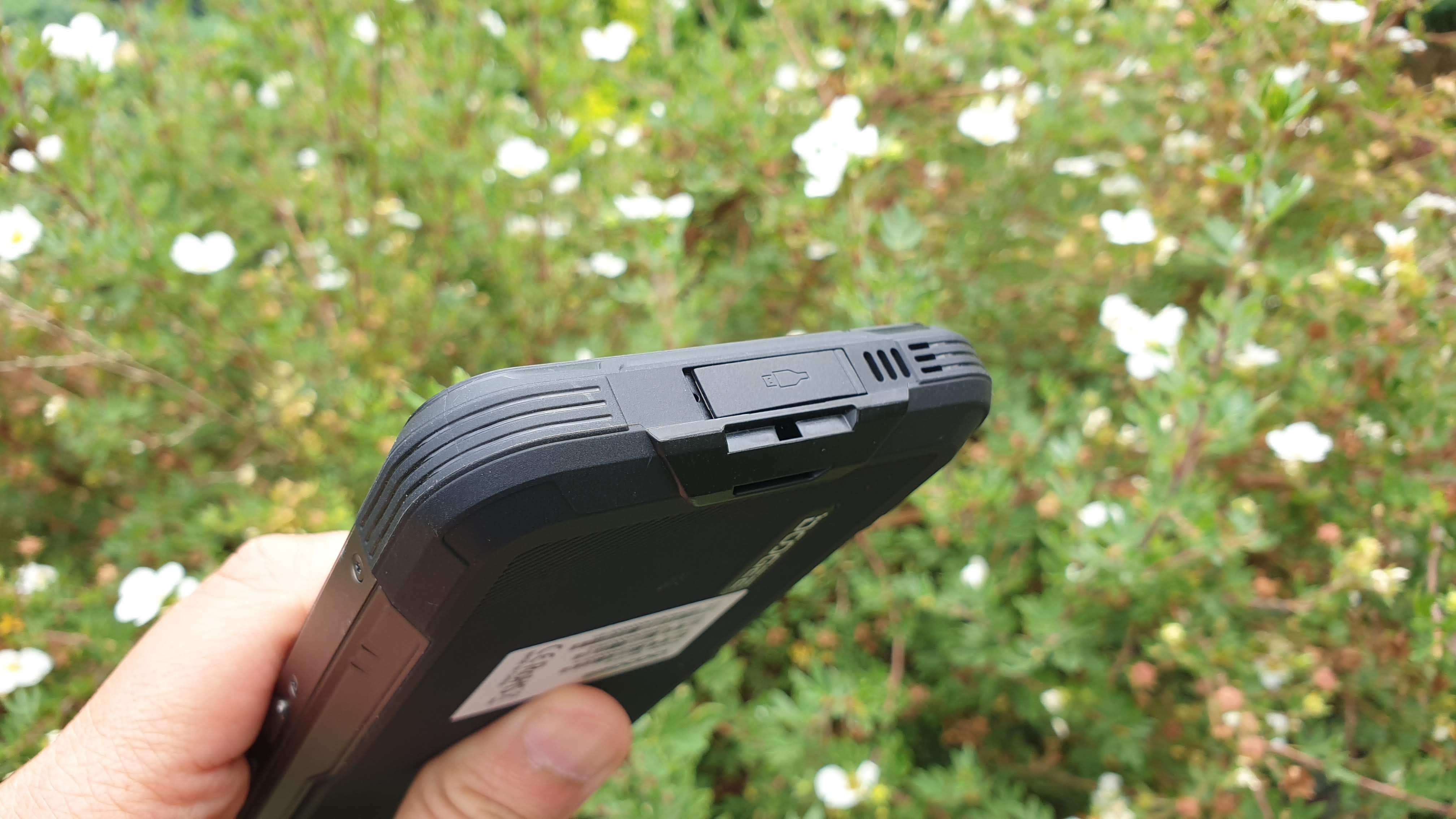
The opposite edge has a type-C connector hidden behind a rubber flap as well as a lanyard attachment loop. On the right side are a SIM tray, a dedicated button for the rangefinder (that can be customized), a second customizable button and on the left one, the volume rocker, power button and fingerprint sensor.

The rear houses a 4-LED flash and a whopping four camera sensors (48MP from Samsung, 8MP, 2MP and 2MP). The front facia has a 16MP pin hole camera sensor also built by Samsung and lodged near the top left end.
Sign up to the TechRadar Pro newsletter to get all the top news, opinion, features and guidance your business needs to succeed!
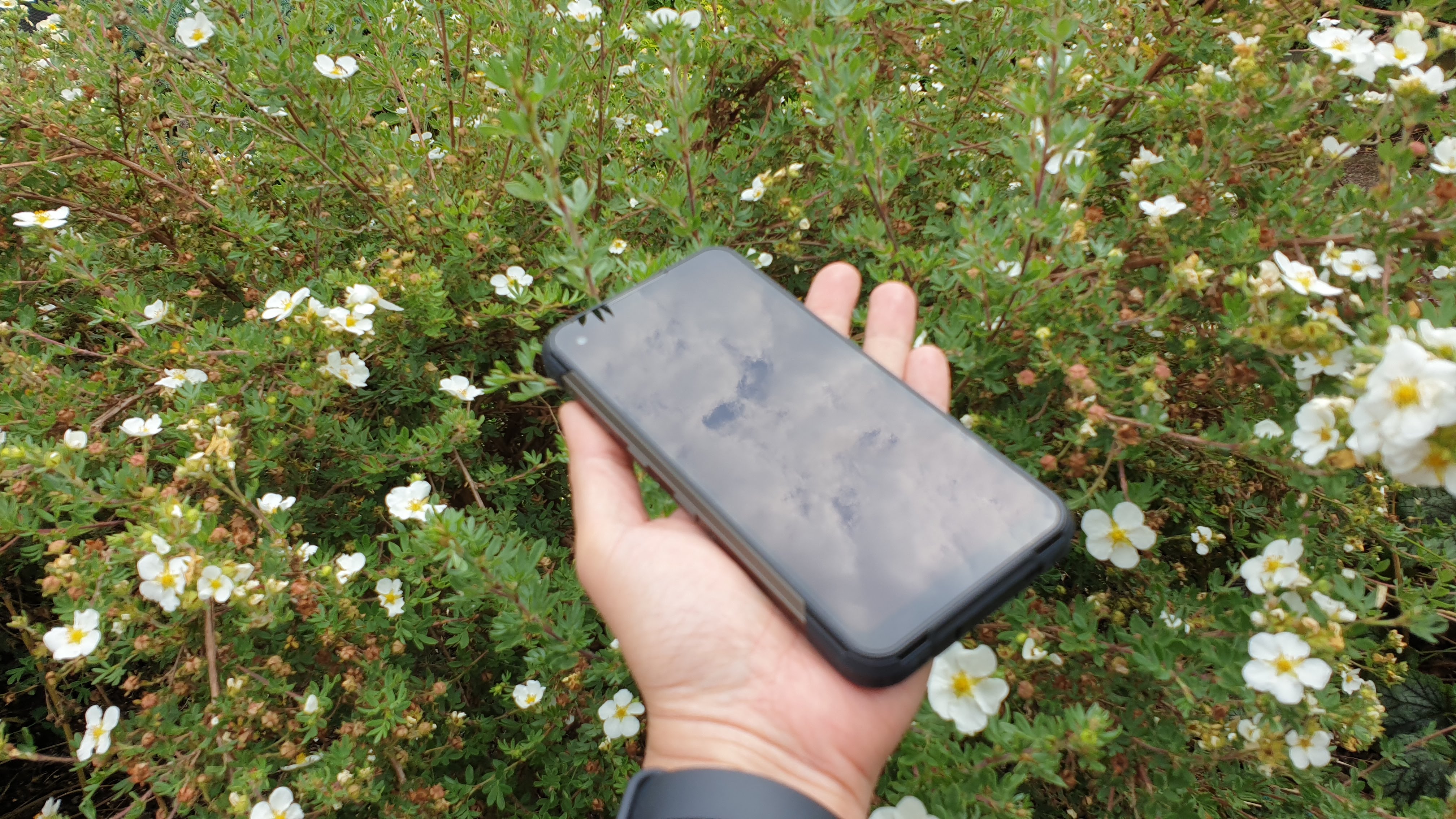
Hardware
The Doogee S97 Pro comes with the following hardware:
CPU: Mediatek Helio G95
GPU: Arm Mali-G76 MC4
RAM: 8GB
Storage: 128GB
Screen size: 6.39-inch
Resolution: 1560x720
Weight: 350g
Dimensions: 169 x 83 x 17mm
Rear camera: 48MP, 8MP, 2MP, 2MP
Front camera: 16MP
OS: Android 11
Battery: 8.5Ah
At the heart of the S97 Pro is the Mediatek Helio G95, an 8-core monster paired with four Arm Mali-G76 MC4 graphic cores. It is teamed with 8GB LPDDR4x system memory and 128GB UFS 2.1 system storage courtesy of Samsung. Elsewhere is support for Wi-Fi 5, NFC and Bluetooth 5.0 as well as a myriad of other cellular bands (no 5G though).
The phone uses a 6.4-inch HD+ display (with a Corning Gorilla glass overlay and a 1560 x 720 pixel resolution) as well as a 8,500mAh battery that supports 33W fast charging delivered via the bundled 11V,3A power supply unit; Doogee says that it can charge a battery to just over half its capacity in 60 minutes. Sadly, it doesn’t do reverse charging but has a 10W wireless charging capacity.
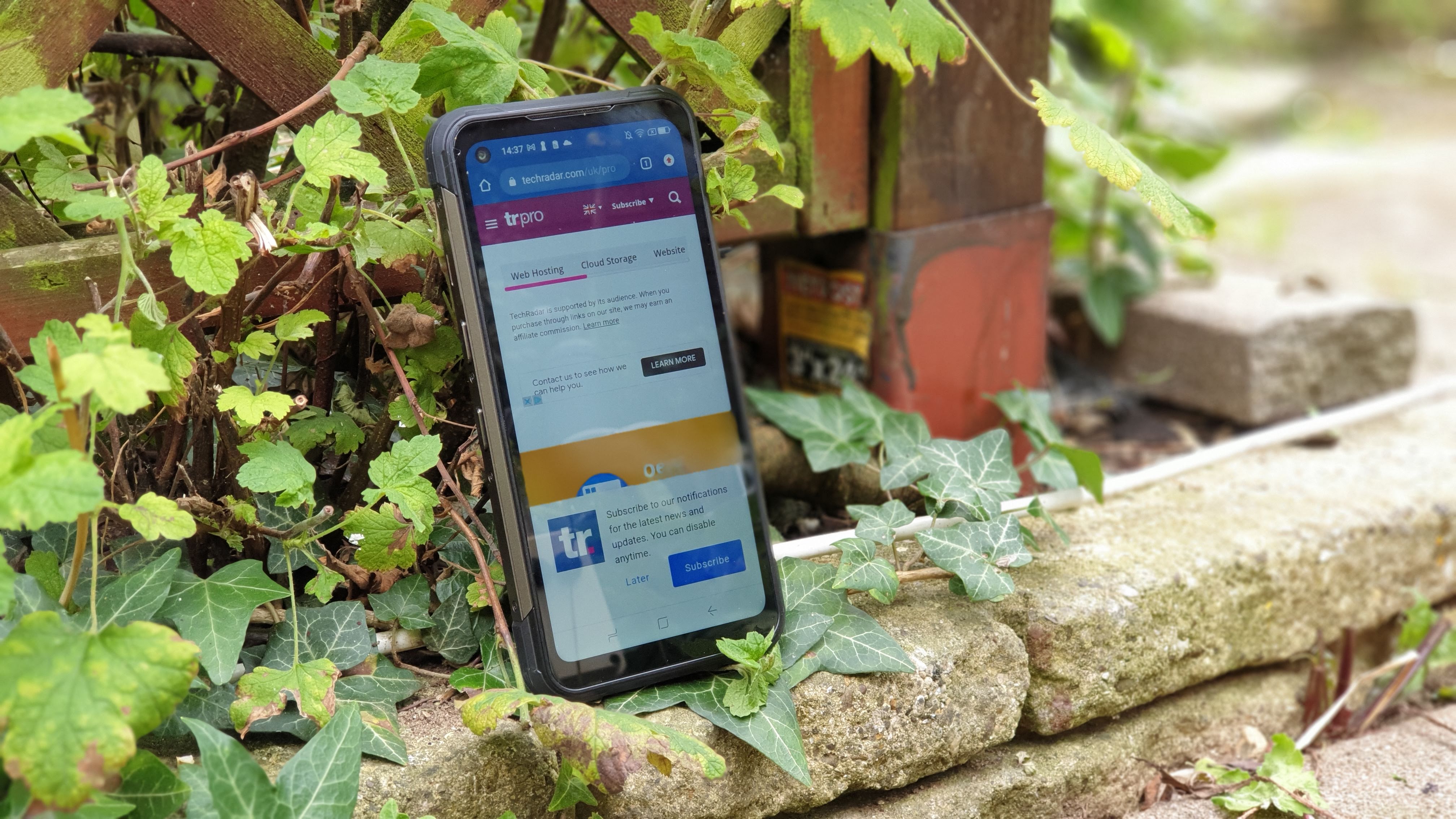
In use
The S97 Pro is one of the fastest non-5G rugged smartphones on the market according to our tests. It scored the highest PCMark number to date and delivered some solid performance overall except when it came to its storage subsystem.
This is how the Doogee S97 Pro performed in our suite of benchmark tests:
PCMark (Work 2.0): 10376
Passmark: 6680
Passmark CPU: 3058
Androbench (sequential): 524 (sequential read); 198 (sequential write)
Androbench (random): 158 (random read); 29 (random write)
3DMark Wild Life Vulkan: 1500
LinPack MFLOPS: 745
Its laser rangefinder works very well and can be used to calculate volumes, surface areas or angles (via Pythagoras’ theorem). There’s no manual and no real need for it as the feature is rather straightforward. As expected, it comes with Android 11 (with a custom UI) and the usual assortment of DIY apps usually found on Mediatek-powered rugged smartphones (sound meter, protractor, compass and a few more).
Outside the full array of Google Mobile Services are some Mediatek apps like the Security Center (which is more of a utility suite), Children Space and Easy launcher which are rudimentary virtual desktops.
Despite its imposing size, the S97 Pro handles reasonably well thanks to its curvy edges and its display is surprisingly bright.
Should I buy the Doogee S97 Pro?
Buy it if:
You want something different: The S97 Pro’s laser rangefinder is not as exceptional as a thermal camera but it is a useful and rather affordable feature to add to a smartphone. Note that the S96 Pro featured an IR night vision camera.
You want a big battery in a rugged form factor: At 8,500mAh, the battery on the S97 Pro is one of the biggest on any smartphone right now. Its battery life is also likely to be amongst the best thanks to the low resolution of its display.
Don’t buy it if:
You want a small rugged smartphone. This is one big smartphone, not as big as Oukitel’s gigantic 5G smartphone, but still bigger than most rugged smartphones available for sale. Blame the huge battery and the extra components required for the laser rangefinder.
High screen resolution is a must. The S97 Pro is the latest of a growing number of smartphones that are eschewing full HD (and beyond) resolutions and instead adopting lower pixel counts. Why? Because these displays are cheaper and tend to consume less power, which means longer battery life and better value for money.
- We've also highlighted the best rugged smartphones

Désiré has been musing and writing about technology during a career spanning four decades. He dabbled in website builders and web hosting when DHTML and frames were in vogue and started narrating about the impact of technology on society just before the start of the Y2K hysteria at the turn of the last millennium.
